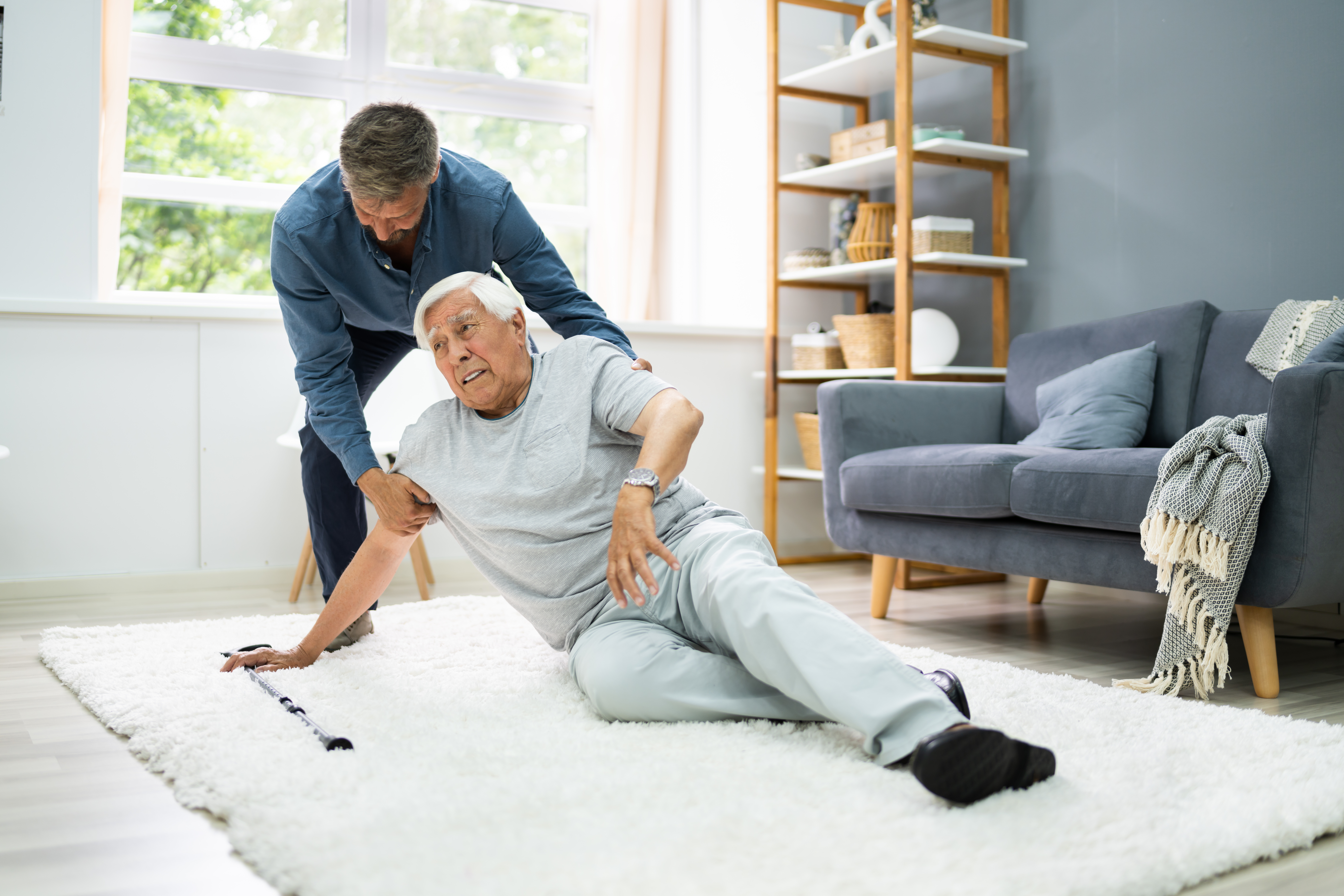
Falls can be a big concern, especially for older adults. In fact, according to the National Institutes of Health (NIH), over 30% of people 65 and older fall every year, resulting in 3 million emergency room visits. Falls are also one of the most common and serious causes of disability, including traumatic brain injuries, hip fractures, and more.
But here’s the good news: Many falls are preventable — and by understanding the fall risks in and around the home, you can take easy steps to protect yourself and others.
Common fall risks at home
There are a few common fall risks people tend to overlook. But with the proper modifications, you can reduce the chances of falling. Here are a few suggestions that can go a long way toward keeping you safe.
Address bad lighting
When you can’t see well, it’s easier to trip and fall. Make sure all areas of the home have bright lighting, and you’re able to turn on lights without fumbling around in the dark. Motion-sensor lights can help in areas like hallways and stairwells.
Know the whereabouts of your pets
Pets can make great companions, but they can also get underfoot. Always look around before you get up, so you know where the dog or cat is in the room. If possible, train them to follow commands like “sit” and “stay,” so they don’t interfere when people are up and moving around. Additionally, be careful not to trip over pet bedding or toys.
Minimize loose cords and rugs
In general, cleaning up clutter can remove tripping hazards. But pay special attention to loose cords and wires. Most people have a lot of electric-powered devices and appliances. Confirm that cords are against the wall and not stretched across the room. Try to avoid having cords on the floor, above the carpet.
You should also secure any rugs or carpets, so they don’t roll up or move. It’s easy for feet, walkers, canes, or other aids to catch on the material. Rug fabric can also bunch up, making it more of a tripping hazard.
Pay attention to foot conditions, footwear, and any conditions that might cause dizziness
It’s important to stay on top of any foot pain, sores, or injuries since they can affect how you walk. Proper footwear can help. Avoid wearing shoes or slippers that don’t fit or have little-to-no traction. These shoes can fall off feet more easily or cause slipping and stumbling. Instead, look for shoes that fit well, have a sturdy bottom, and offer non-slip soles.
It also helps to know what causes unsteadiness, so you can be extra careful. For example, many people get dizzy if they don’t drink enough water or if they take certain medications. Here are some pointers:
- Hydrate throughout the day, keeping water nearby so you remember to drink.
- Get up slowly or ask for support to lessen dizziness.
- Talk to your doctor about your medications and ask for tips to reduce side effects.
Don’t forget about outdoor hazards
Indoor hazards are important to address, but don’t forget to assess your home on the outside as well, where constantly changing elements can increase your risk of falling. Watch out for uneven pavement, wet leaves or grass, and ice. And, just as with indoor clutter, clean up any outdoor objects, especially if they’re in walkways.
Help is nearby when you need a little extra support
Traditions Health has a history of offering compassionate, professional home health services. Our home health professionals can support you in a number of ways, including helping you identify — and remove — falling and tripping hazards in your home. To learn more about home health services, please contact us by submitting a request care form.